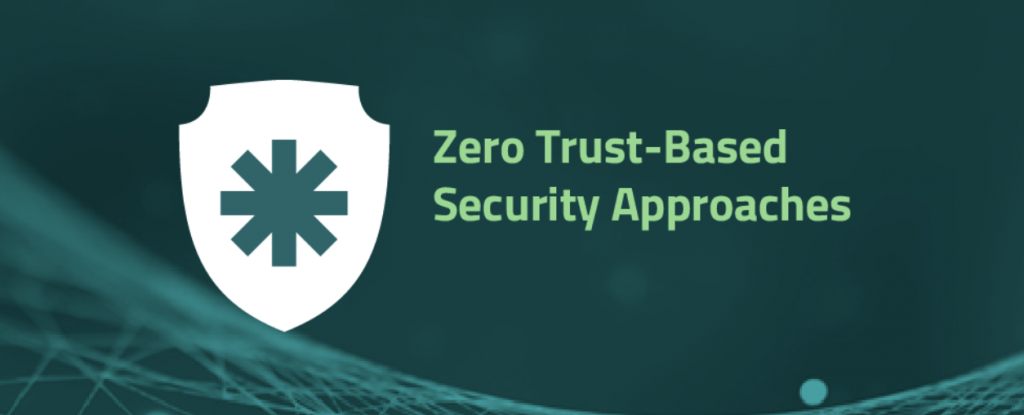Category: VENDORSNEWSSegura News

In a world of complex cybersecurity threats and mobile workforces armed with multiple apps and devices, security in Zero Trust aims to provide comprehensive protection.
The Zero Trust approach never assumes that a request comes from a trusted source, even if it originates from inside the corporate firewall, for example.
Everything is treated as if it came from an open, unsecured network, and trust itself is seen as a responsibility within the zero-trust framework.
Zero-trust security can also be called non-perimeter security. This term shows how it is the opposite of traditional security models, which follow the “trust, but verify” principle and consider users and endpoints already authenticated within the company perimeter or those connected via VPN (Virtual Private Network) as secure.
But this implicit trust increases the risk of data breaches caused by insider threats, as it allows for extensive, unverified sideways movement across the entire network. Keep reading and learn more about Zero Trust-based security.
Zero Trust is a security framework that requires all users, inside or outside the organization’s network, to be authenticated, authorized, and continuously validated for security configuration and behavior before receiving or maintaining access to applications and data.
Zero Trust assumes that there is no traditional network edge. Networks can be on-premises, in the cloud, or a hybrid combination with resources anywhere, as well as workers anywhere.
The execution of this framework combines advanced technologies such as multi-factor authentication, IAM (Identity and Access Management), identity protection, and state-of-the-art endpoint security technology to verify user identity and maintain the system’s security.
This approach also requires considering data encryption, email protection, and asset and endpoint hygiene verification before connecting to applications.
Therefore, zero-trust-based security requires organizations to continuously monitor and validate that a user and their device have the correct privileges and attributes.
Also, it requires the organization to know all of its services and privileged accounts and be able to establish controls over what and where they connect. One-time validation is simply not enough, as threats and user attributes are subject to change.
The concept of zero trust can be built on your existing architecture and does not require you to eliminate and replace existing technology.
There are no Zero Trust products. Some products work well in Zero Trust environments and others that do not. Zero Trust is also quite simple to deploy, implement, and maintain using a simple five-step methodology. This guided process helps you identify where you are and where to go.
Identify the protection surface of your environment.
Zero Trust is one of the most effective ways for organizations to control access to their networks, applications, and data. This concept combines a wide range of preventive techniques, including identity verification and behavioral analysis, micro-segmentation, endpoint security, and least-privilege controls to stop potential intruders and limit their access in the event of a breach.
It is not enough to establish firewall rules and block by packet analysis. A compromised account that goes through authentication protocols on a network perimeter device must still be assessed for each subsequent session or endpoint it tries to access.
Having the technology to recognize normal versus anomalous behavior allows organizations to tighten authentication controls and policies rather than taking over the connection via VPN or SWG (Secure Web Gateway), which means the connection is completely secure and reliable.
This additional layer of security is critical as companies increase the number of endpoints on their network and expand their infrastructure to include cloud-based applications and servers, not to mention the boom of service accounts on microsites and other locally-hosted machines, VM, or via SaaS.
These trends make it more difficult to establish, monitor and maintain secure perimeters. Additionally, a borderless security strategy is vital for organizations as a global workforce that offers employees the ability to work remotely.
The main benefits of a zero-trust model for protecting systems, information, and other valuable assets for businesses are:
Superior risk mitigation by closing security breaches and controlling lateral movement in the net.
Finally, by segmenting the network by identity, groups, and role and by controlling user access, zero-trust-based security helps the organization contain breaches and minimize potential damage. This is an important security measure, as some of the more sophisticated attacks are orchestrated by invasive credentials (internal or compromised).
As the classic approach to enterprise security is no longer viable, companies must shift to meet their users’, applications’, and data’s needs wherever they are.
Today, that means the cloud, which offers greater and better flexibility, collaboration, connectivity, and performance.
Category: VENDORSNEWSSegura News
